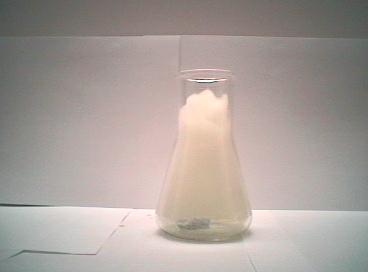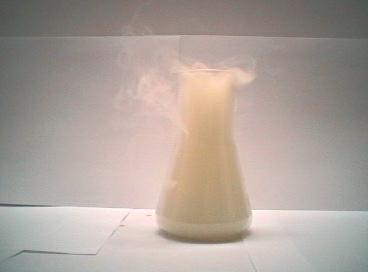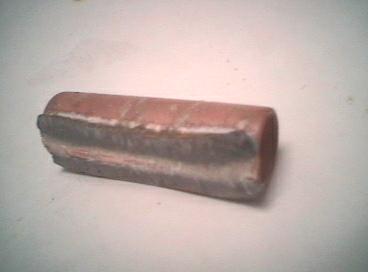



| 1. |  |
2. |  |
| A heated piece of brass is placed in a flask containing chlorine | A white zinc chloride fog is immediately produced | ||
| 3. |  |
4. |  |
| The color is light brown due to copper chloride | Reaction product: corroded brass |
| Photo 1: | Experimental setup: An Erlenmeyer flask is filled with chlorine. A piece of brass is simultaneously heated with a Bunsen burner. The hot brass slug is then placed in the flask. |
| Photo 2: | A white zinc chloride fog is immediately produced. Brass is a zinc-copper alloy. The zinc it contains reacts with chlorine according to:
Zn + Cl2 > ZnCl2 |
| Photo 3: | Shortly thereafter, brown copper chloride fog is produced in a similer manner. Copper reacts with chlorine gas analagous to zinc, only more slowly. |
| Photo 4: | Elemental copper remains as a reaction product, since it takes a longer time to react with chlorine. The zinc that was previously contained in the brass has (at least on the outer surface) reacted completely with the chlorine. |